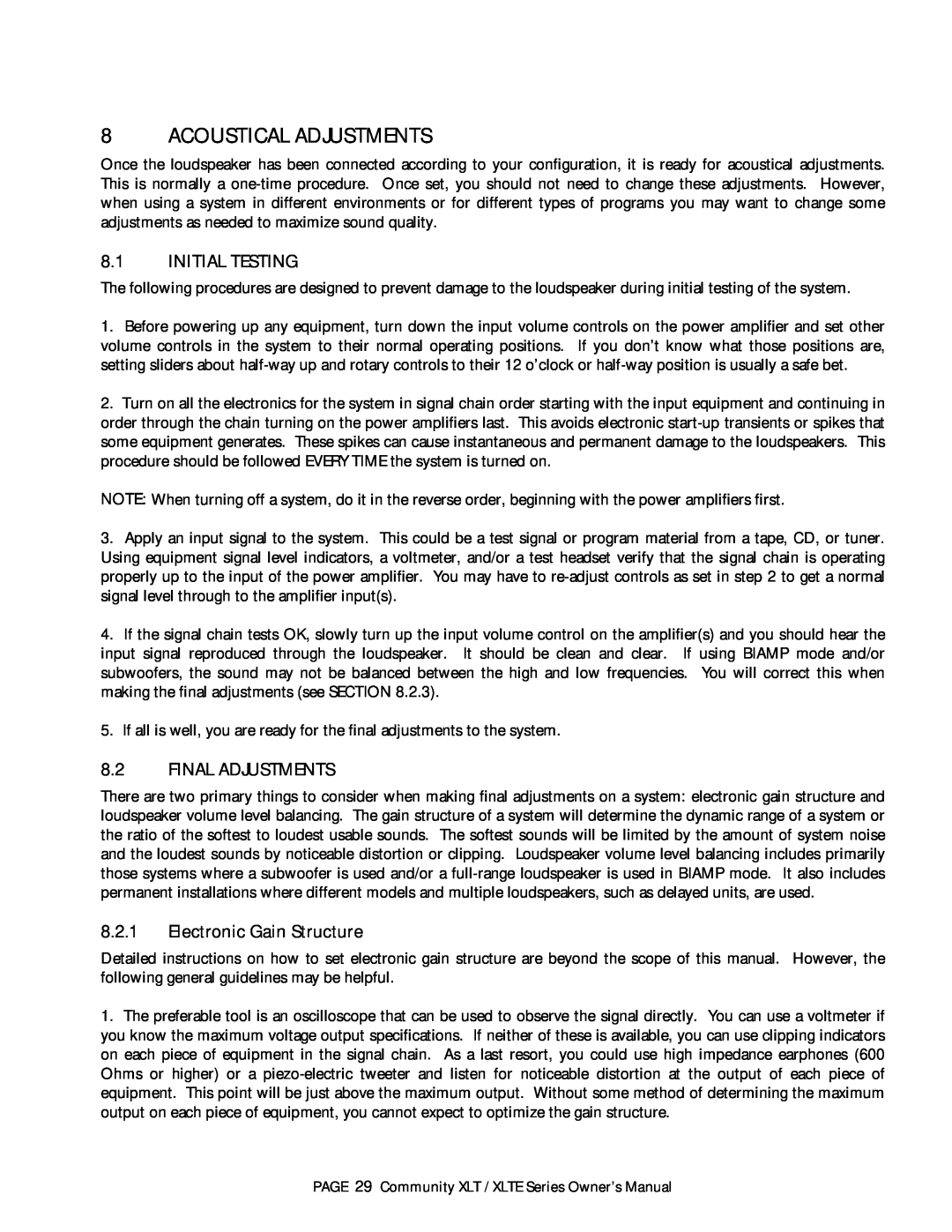8 ACOUSTICAL ADJUSTMENTS
Once the loudspeaker has been connected according to your configuration, it is ready for acoustical adjustments. This is normally a
8.1INITIAL TESTING
The following procedures are designed to prevent damage to the loudspeaker during initial testing of the system.
1.Before powering up any equipment, turn down the input volume controls on the power amplifier and set other volume controls in the system to their normal operating positions. If you don’t know what those positions are, setting sliders about
2.Turn on all the electronics for the system in signal chain order starting with the input equipment and continuing in order through the chain turning on the power amplifiers last. This avoids electronic
NOTE: When turning off a system, do it in the reverse order, beginning with the power amplifiers first.
3.Apply an input signal to the system. This could be a test signal or program material from a tape, CD, or tuner. Using equipment signal level indicators, a voltmeter, and/or a test headset verify that the signal chain is operating properly up to the input of the power amplifier. You may have to
4.If the signal chain tests OK, slowly turn up the input volume control on the amplifier(s) and you should hear the input signal reproduced through the loudspeaker. It should be clean and clear. If using BIAMP mode and/or subwoofers, the sound may not be balanced between the high and low frequencies. You will correct this when making the final adjustments (see SECTION 8.2.3).
5.If all is well, you are ready for the final adjustments to the system.
8.2FINAL ADJUSTMENTS
There are two primary things to consider when making final adjustments on a system: electronic gain structure and loudspeaker volume level balancing. The gain structure of a system will determine the dynamic range of a system or the ratio of the softest to loudest usable sounds. The softest sounds will be limited by the amount of system noise and the loudest sounds by noticeable distortion or clipping. Loudspeaker volume level balancing includes primarily those systems where a subwoofer is used and/or a
8.2.1Electronic Gain Structure
Detailed instructions on how to set electronic gain structure are beyond the scope of this manual. However, the following general guidelines may be helpful.
1.The preferable tool is an oscilloscope that can be used to observe the signal directly. You can use a voltmeter if you know the maximum voltage output specifications. If neither of these is available, you can use clipping indicators on each piece of equipment in the signal chain. As a last resort, you could use high impedance earphones (600 Ohms or higher) or a
PAGE 29 Community XLT / XLTE Series Owner’s Manual
